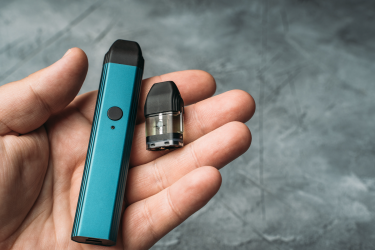
Imagine coming home to find your thirteen-year-old unresponsive. He’s a straight A student and a healthy child – you have no idea what happened to him. You rush him to the hospital, and when you get there, you find a vape in his clothes that has been laced with marijuana, phencyclidine (PCP), and fentanyl (which is 50 times stronger than heroin). After being resuscitated, placed on life support, and in a coma for two and a half weeks, he wakes up and tells you that a group of kids he thought were his friends mercilessly bullied him until he agreed to try the vape in front of them, causing a stroke and the subsequent medical conditions.
This sounds like a nightmare, but it is the tragic story that happened to a Georgia family earlier this year. Zach Corona is this child, and Lynda Amos is this parent. On January 1st, Zach was found unconscious in his room by his sister Katie. At first when he didn’t respond, she thought he was playing with her as he often did, but she quickly realized that something was wrong and called an ambulance.
Zach suffered a stroke, flatlined, was resuscitated and placed on life support, and miraculously woke up after being in a coma for almost three weeks. While he is now on the road to recovery, he has suffered permanent brain damage, has no movement in his left arm, and lost sight in his right eye.
When he woke up, Zach shared that a group of eight boys and one girl forced him to smoke the vape pen in front of them, and if he didn’t hide it for them, they would “beat him up.” What makes it worse is that – despite bullying him for months – Zach believed that they were his friends.
While Zach’s story is tragic, it is far from unique. According to the U.S. Centers for Disease Control (CDC), over 150 people die every single day in the U.S. from overdoses related to synthetic opioids like fentanyl. One reason for this is that fentanyl is nearly impossible to detect. Powdered fentanyl looks like many other drugs, and can be made into pills that resemble prescription opioids. In its liquid form, it can be found in nasal sprays, eye drops, or dropped onto paper like small candies. An item may contain deadly levels of fentanyl, and you wouldn’t be able to see it, taste it, or smell it.
According to the United States Drug Enforcement Administration (DEA), the primary producers of fentanyl are China and Mexico. So far this year, they have seized over 16 million fentanyl pills and nearly three thousand pounds of fentanyl powder. This equates to roughly 78.1 million deadly doses, so clearly fentanyl is readily available. Given that this pictured amount can be a lethal dose (2 milligrams), the danger is immense.

Photo from the DEA
The opioid epidemic cannot be fixed overnight, but there are some things you can do to help prevent overdoses from fentanyl and other drugs.
Fentanyl overdose symptoms include:
If you see someone experiencing an overdose, call 911 immediately, then try to keep them awake and breathing and lay them on their side to prevent choking.
The DEA has a variety of resources for parents to help them educate their children on the dangers of drugs, but a common theme throughout is the importance of talking to your child. Share the health risks and the legal consequences that come with doing drugs, but bigger than that, just build and maintain a positive relationship with your children and remind them that you care.
NC Family recently welcomed Erica Komisar to our podcast, Family Policy Matters, to discuss how parents can protect and care for their teens. She offers several pieces of good advice about how to build positive relationships with teenagers and the role that could have on their mental health and preventing substance use.
As heartbreaking as it is to think that children would knowingly force another child to use a substance that could kill them, that is exactly how Zach ended up in the hospital. If you are a parent or teacher, stand up to bullying, and teach your children how to stand up to bullying. Research has shown that when adults respond quickly and consistently to bullying, they send a message that it is not acceptable, and over time this can stop the bullying behavior. StopBullying.gov offers some valuable resources for how you can play a role in the prevention of bullying.
The opioid epidemic has ruined the lives of hundreds of thousands of Americans over more than twenty years. Fentanyl is the newest wave in this epidemic, and it is time for it to stop. In the words of Rebecca Kiessling, a mom who lost two sons due to fentanyl overdoses, “This is a war. Act like it. Do something.”